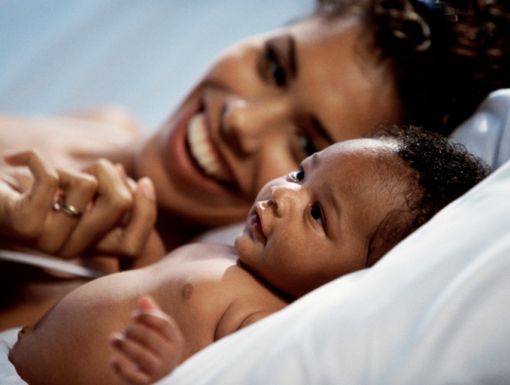
Speech Development In Children: When Should You Be Concerned?
Watching your child learn to communicate is just one of the many exciting things about being a parent. Hearing your baby or toddler progress to speak his or her first words or sing to a song for the first time can be a memorable experience. But what if your child isn’t developing speech or language like other children?
Hearing problems may be suspected in children who are not responding to sounds or who are not developing their language skills appropriately. The following are some age-related guidelines that may help to decide if your child has hearing problems.
Consult your child's doctor if you are suspicious that your child is not properly developing speech and language skills. The National Institute on Deafness and Other Communication Disorders (NIDCD) and other experts list the following age-appropriate speech and language milestones for babies and young children.
Milestones related to speech and language:
Birth to 5 Months
- Coos
- Vocalizes pleasure and displeasure sounds (laughs, giggles, cries or fusses)
- Makes noise when talked to
6 to 11 Months
- Understands "no-no"
- Babbles (says "ba-ba-ba")
- Says "ma-ma" or "da-da" without meaning
- Tries to communicate by actions or gestures
- Tries to repeat your sounds
- Says first word
12 to 17 months
- Answers simple questions nonverbally
- Says two to three words to label a person or object (pronunciation may not be clear)
- Tries to imitate simple words
- Vocabulary of four to six words
18 to 23 months
- Correctly pronounces most vowels and n, m, p, h, especially in the beginning of syllables and short words; also begins to use other speech sounds
- Vocabulary of 50 words, pronunciation is often unclear
- Asks for common foods by name
- Makes animal sounds, such as "moo"
- Starting to combine words, such as "more milk"
- Begins to use pronouns, such as "mine"
- Uses two-word phrases
2 to 3 years
- Knows some spatial concepts, such as "in," "on"
- Knows pronouns, such as "you," "me," "her"
- Knows descriptive words, such as "big," "happy"
- Uses three word sentences
- Speech is becoming more accurate, but may still leave off ending sounds; strangers may not be able to understand much of what is said
- Answers simple questions
- Begins to use more pronouns, such as "you," "I"
- Uses question inflection to ask for something, such as "my ball?"
- Begins to use plurals, such as "shoes" or "socks" and regular past tense verbs, such as "jumped"
3 to 4 years
- Groups objects, such as foods and clothes
- Identifies colors
- Uses most speech sounds, but may distort some of the more difficult sounds, such as l, r, s, sh, ch, y, v, z, th and these sounds may not be fully mastered until age 7 or 8
- Uses consonants in the beginning, middle, and ends of words; some of the more difficult consonants may be distorted, but attempts to say them
- Strangers are able to understand much of what is said
- Able to describe the use of objects, such as "fork," "car," etc.
- Has fun with language; enjoys poems and recognizes language absurdities, such as, "is that an elephant on your head?"
- Expresses ideas and feelings rather than just talking about the world around him or her
- Uses verbs that end in "ing," such as "walking" and "talking"
- Answers simple questions, such as "What do you do when you are hungry?"
- Repeats sentences
4 to 5 years
- Understands spatial concepts, such as "behind," "next to"
- Understands complex questions
- Speech is understandable, but makes mistakes pronouncing long, difficult, or complex words, such as "hippopotamus"
- Uses some irregular past tense verbs, such as "ran," "fell"
- Describes how to do things, such as painting a picture
- Defines words
- Lists items that belong in a category, such as animals and vehicles
- Answers "why" questions
5 years
- Understands time sequences (what happened first, second and third)
- Carries out a series of three directions
- Understands rhyming
- Engages in conversation
- Sentences can be eight or more words in length
- Uses compound and complex sentences
- Describes objects
- Uses imagination to create stories


